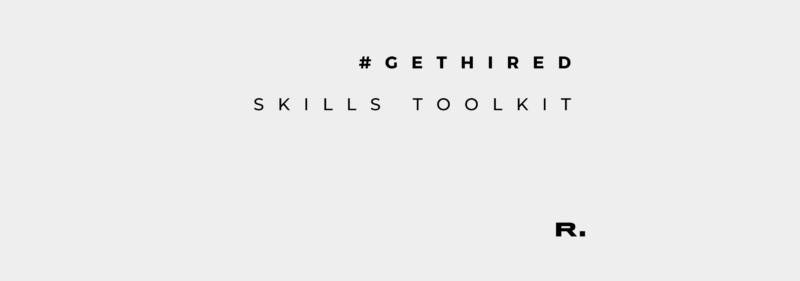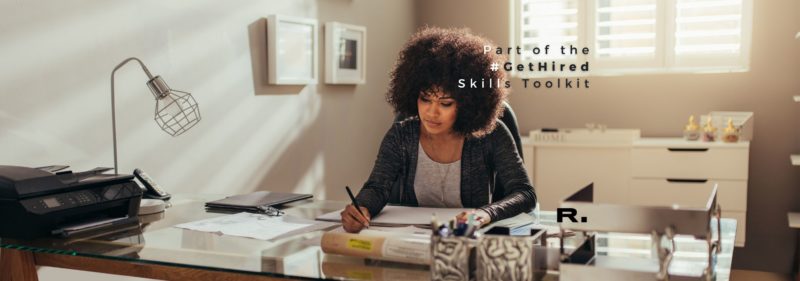Let’s talk about how to write a cover letter to land your next job. As recruiters, we read a lot of CVs and cover letters. So we’ve broken it up to make it easier. We’ll start with defining what a cover letter is. move onto our top tips. And finish with how you can write each section of your cover letter.
What’re you waiting for? Read on!
What is a cover letter?
A cover letter (also known as ‘covering letter’) is a formal note that accompanies your application or CV, depending on the role requirements. It’s purpose is to persuade the reader to invite you for an interview.
The cover letter is a snapshot of the skills and experience you’ve detailed in the application or your CV. Treat it as a clear and concise statement as to why you should get the job.
But remember, hiring managers are seeing hundreds of applications for each role – they’re looking for differentiators. Make your cover letter stand out for the right reasons by relating your key skills to the job and the company.
Assuming you’ve done all your research (as discussed in customising your application), you should have a good idea of how your skills and experience are a good fit for the role and the business.
Our top tips
Our three top tips to keep in mind are:
- Keep it clear and concise (one page of A4 is long enough, divided into three or four paragraphs)
- Be forthright about your skills and experience (back up your claims with supporting evidence)
- Inject some passion! (enthusiasm can go a long way)
Now, let’s talk formatting…
Much like your CV, attention grabbing should be kept for the content, not the formatting. Use simple legible fonts, avoid unnecessary embellishments and keeping it short and sweet; under a page of A4 is best practice.
There are thousands of cover letter templates out there. These are useful as a structured framework, but need to be fleshed out so it resembles something as valuable and unique as you are.
How to write your cover letter
RESEARCH! Understand the company and job role thoroughly first. It’s often easier to complete the application form first, as you’ll be familiar with the kind of information the business wants from you, then start drafting your letter.
Now putting pen to paper:
- Your name and address should be placed in the top-right of the page.
- The hiring manager’s name, company name, and company address should go under your details, and on the left-hand side of the page
- Add the date
- Greeting – Do you know the name of the person you’re sending your application to? If so, formerly address the letter to them
If not, try and find out. A quick search on the team pages on their website or hunting for their profile on LinkedIn could identify them and help show your initiative. If you’re not confident you’ve found the right person or simply can’t find anything, ‘Dear Sir/Madam’ will suffice.
In the body of your cover letter
Paragraph one: start by saying why you’re getting in touch. (It’s sometimes also helpful to mention where you saw the job listing). For example;
“I wish to apply for the role of Customer Service Manager. Please find my application attached for your consideration.”
Now move on to discuss why you’re suitable for the role in the second paragraph. You can briefly describe your professional and academic qualifications which relate to the role, and ensure you refer to the skills in the job description.
“I have over seven years’ experience leading award-winning customer service teams across the IT industry. I believe the knowledge and skills acquired throughout my career make me a strong candidate for the role.”
Paragraph three: this is where your research and application prep can really shine through.
If you understand what’s important to the company, you can pull out relevant examples from your own experience that will appeal to hiring managers, piquing their interest enough to get you in for an interview. Emphasise what you can do for the company.
Use this section to support your opening statement. This makes the kind of results you could deliver for their business seem not only desirable but also tangible.
“In my last role as Customer Service Team Leader at [name of former employer] I have been responsible for managing a team of 12 agents delivering online and phone based customer service queries, dealing with call volumes up to 200 enquiries per day. I developed a staff training initiative which supported one-contact resolutions. This saw a five point increase on the business’ NPS score and drove recurring revenue through app upsells by 27% across the quarter. I am confident I can apply these skills to the Customer Service Manager role.”
The close
The close is crucial. For paragraph four, make sure you reiterate your intentions and interest in the role, noting any common skills or attitudes you have with the company. Thank them for their time and indicate your desire to discuss the role further.
“Having read your company’s vision statement, I think I am a perfect fit for your company culture and able to help you in reaching your goals. As I’ve seen from your Trustpilot pilot, [name of business] already has an incredible reputation for delivering product excellence. With my previous experience and expertise, I believe I can strengthen this further by ensuring the delivery of an exceptional customer experience at every interaction, with my confident, friendly and professional approach.
Thank you for your consideration. I look forward to meeting with you to discuss my application further.”
Then sign off ‘Yours sincerely’ if you opened the letter addressing it to a specific person, or ‘yours faithfully’ if you didn’t.
Final checks
You’re nearly done! Now just:
- Check all your spelling and grammar (we recommend using Grammarly, which has a free option)
- Double check you’ve attached all the relevant documentation
- Press send
Good luck and we’ll see you in the interview stage soon!
Ready to take the next step? View the next chapter in our #GetHired Skills Toolkit.
Other Reads

4 Minute Read 08.12.20
CV Best practice
Found yourself out of work for the first time in a long time? We’ve launched the #GetHired Skills ...

2 Minute Read 08.12.20
Master the interview basics
Found yourself out of work for the first time in a long time? We’ve launched the #GetHired Skills ...

3 Minute Read 08.12.20
Be SMART in your job hunt goals
Found yourself out of work for the first time in a long time? We’ve launched the #GetHired Skills ...